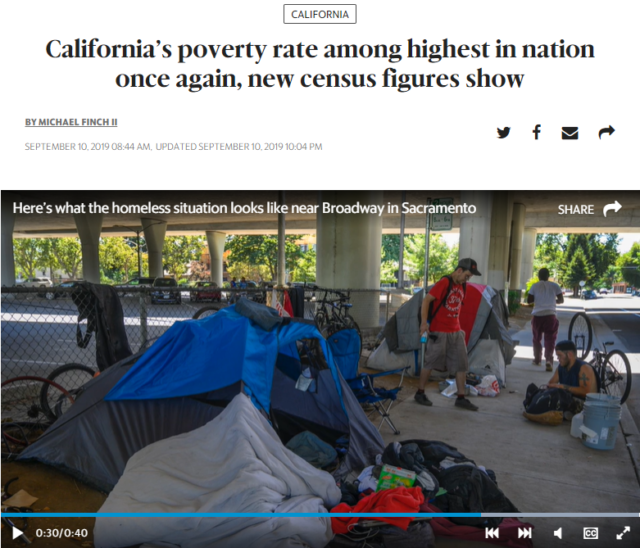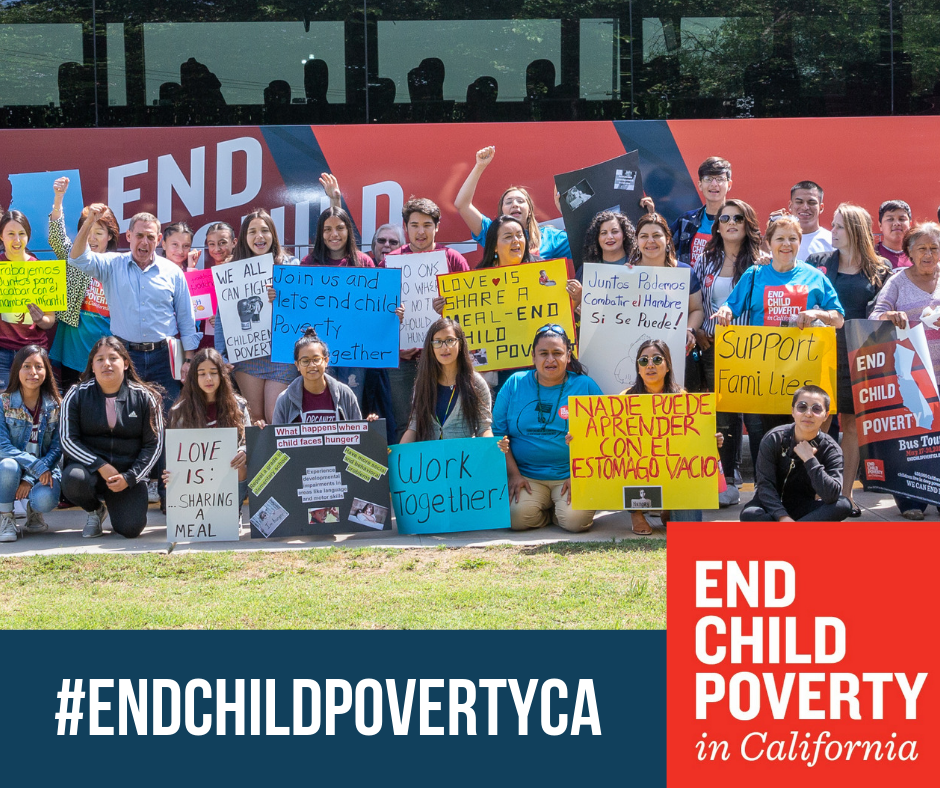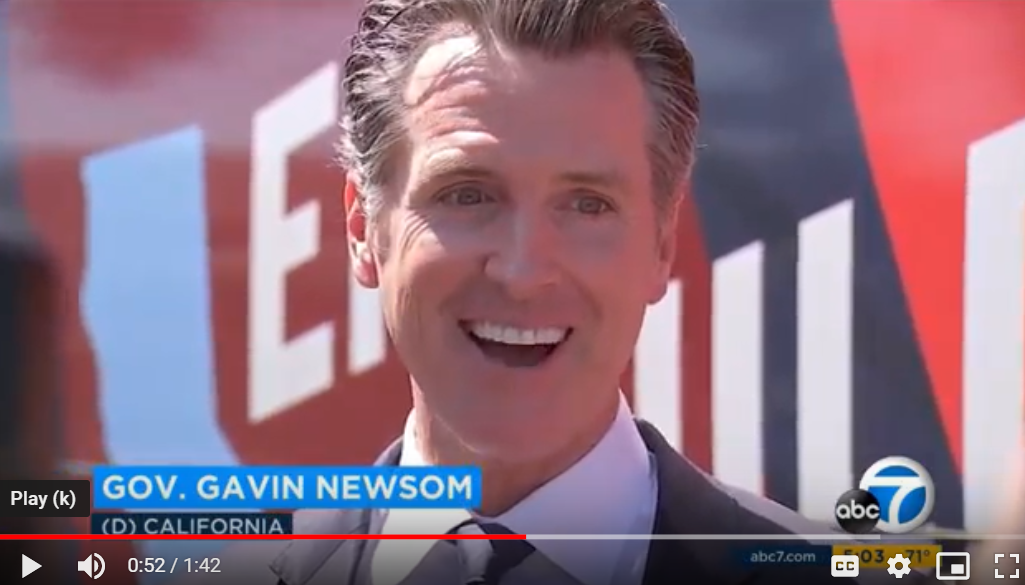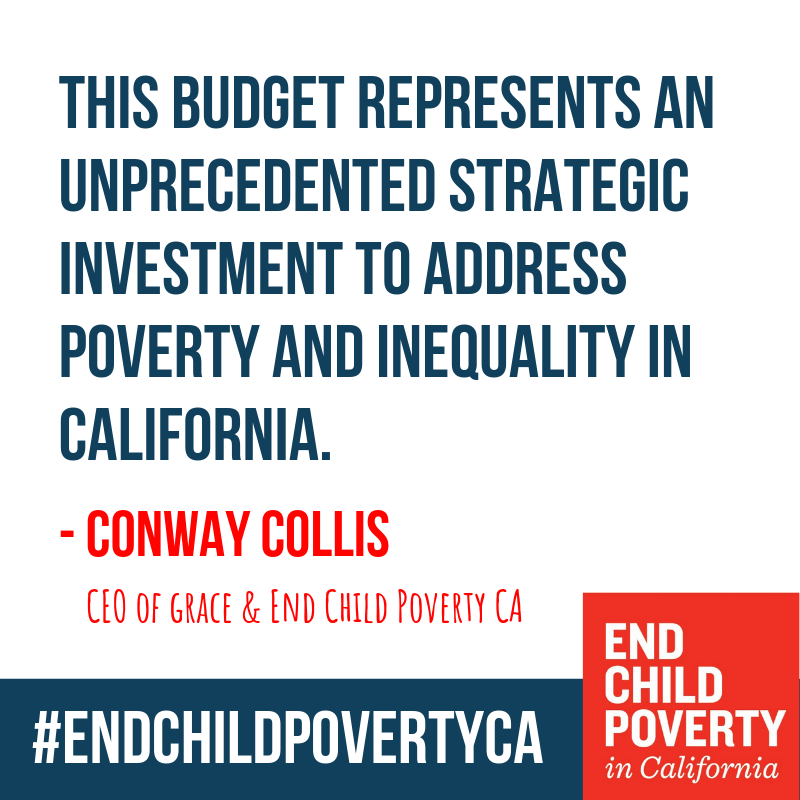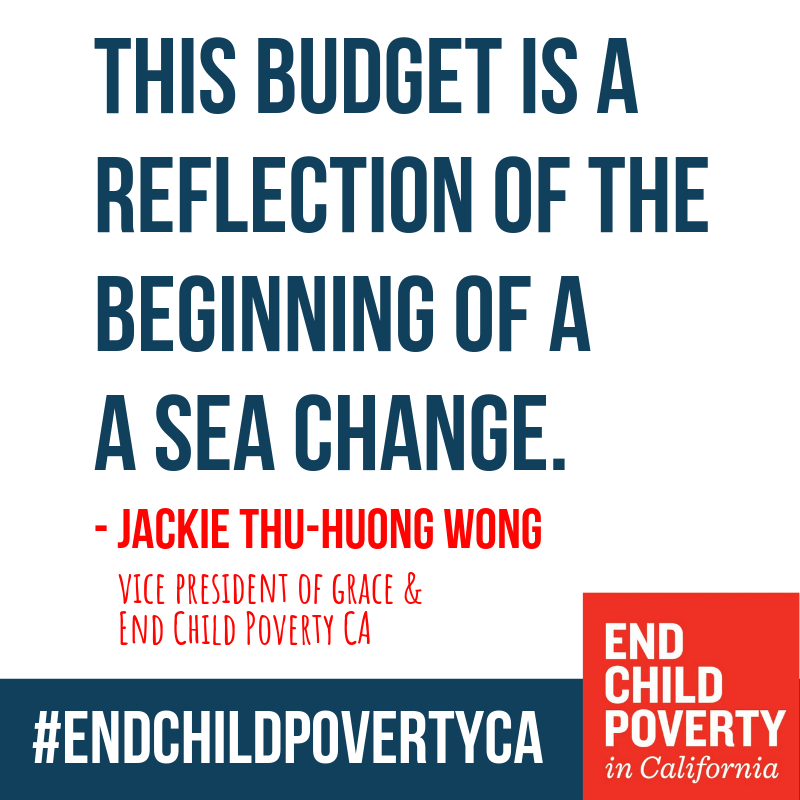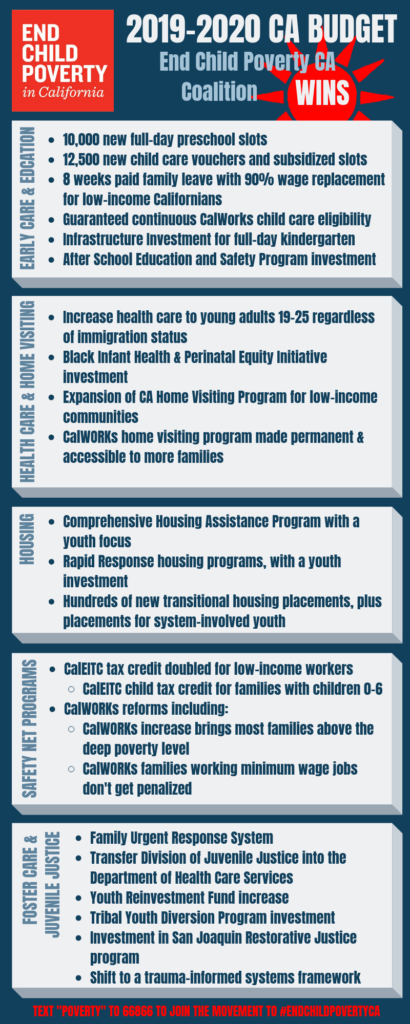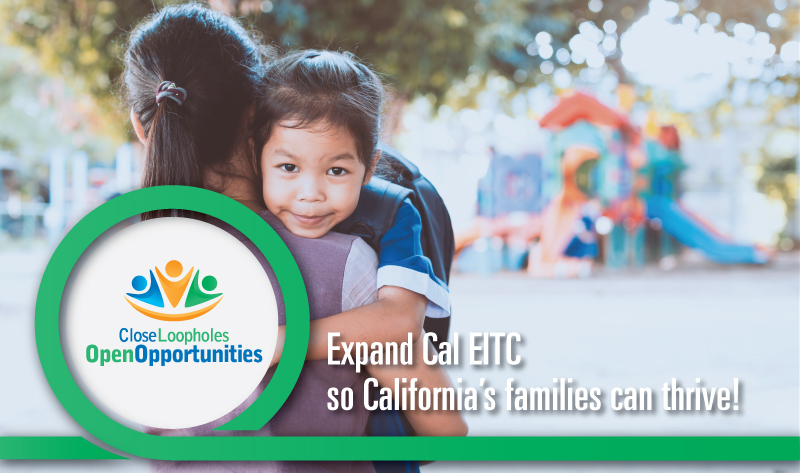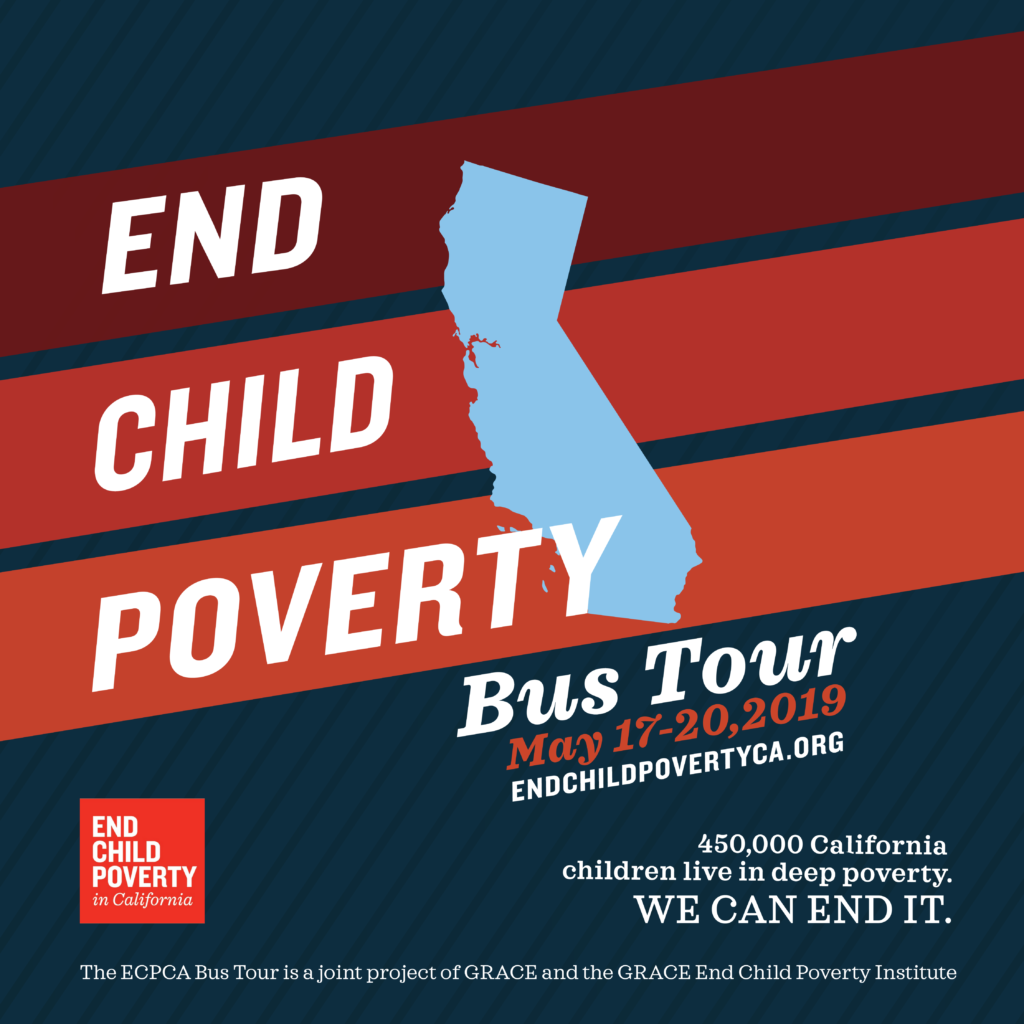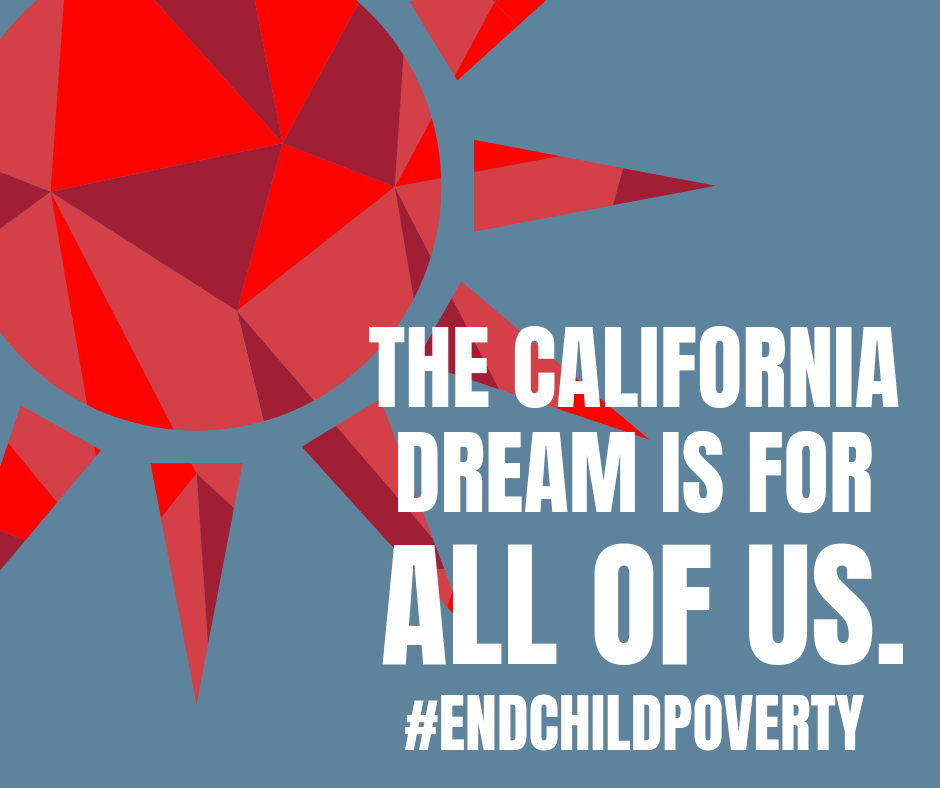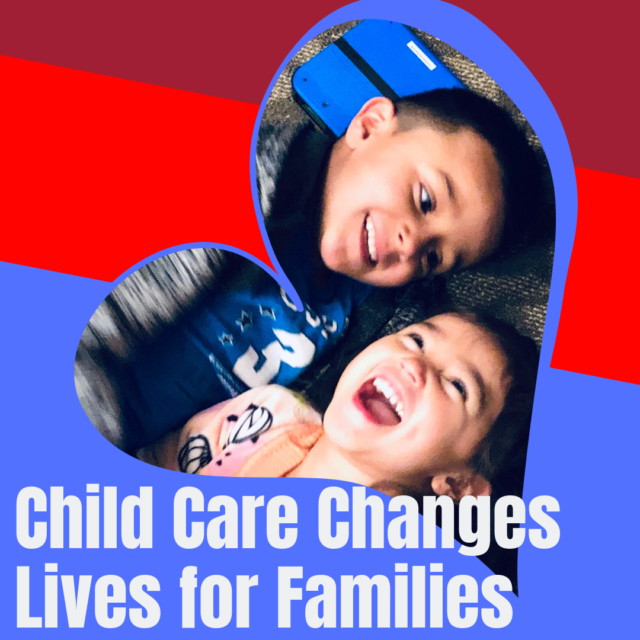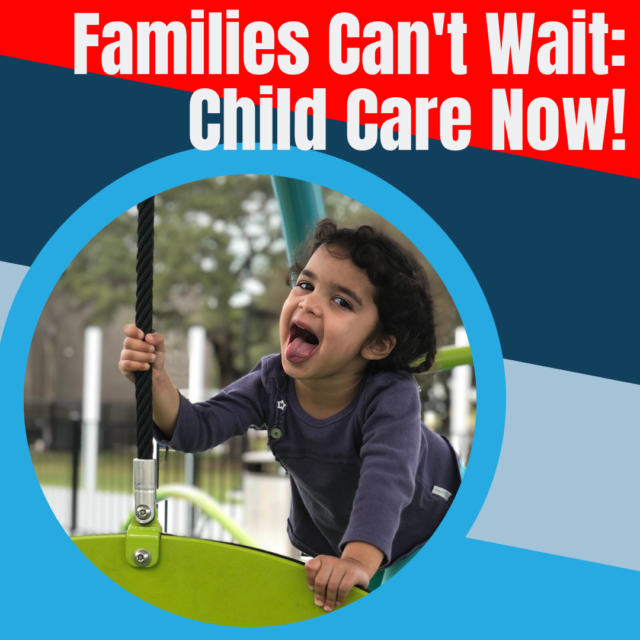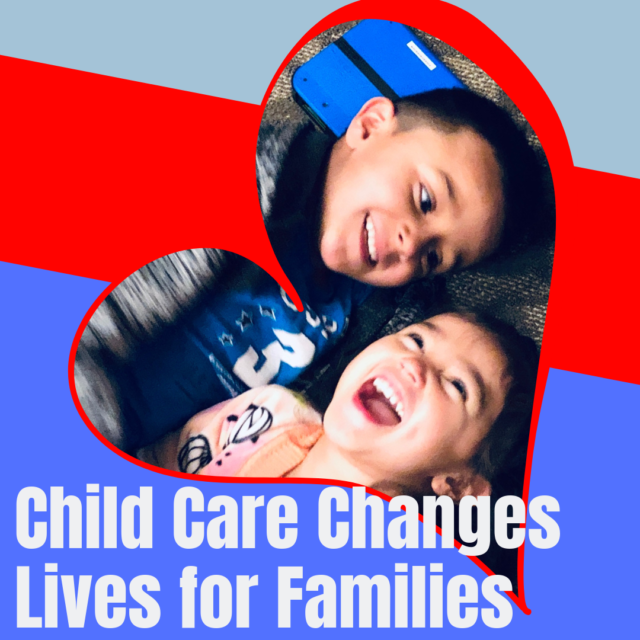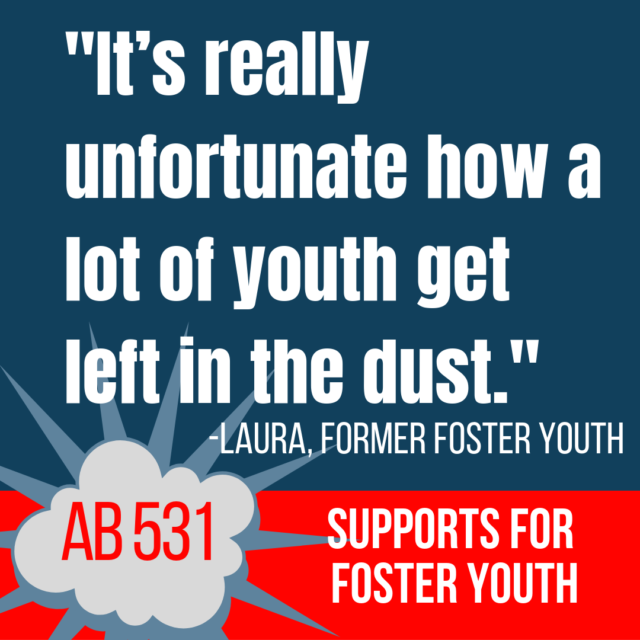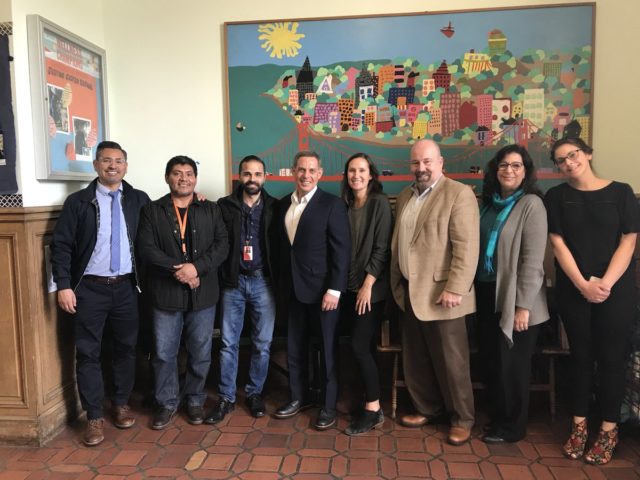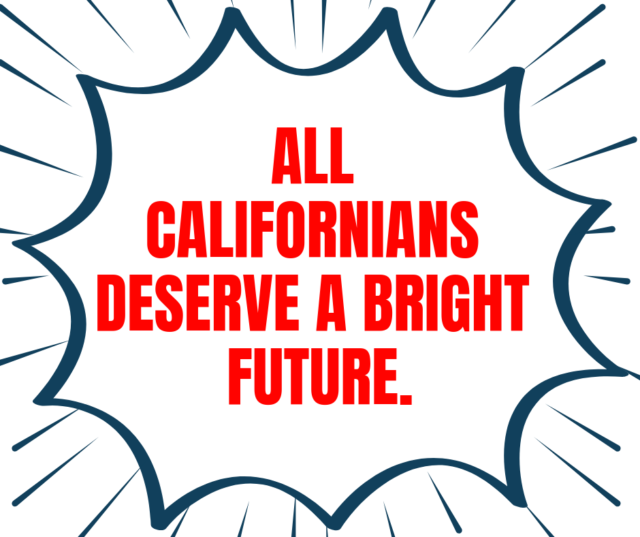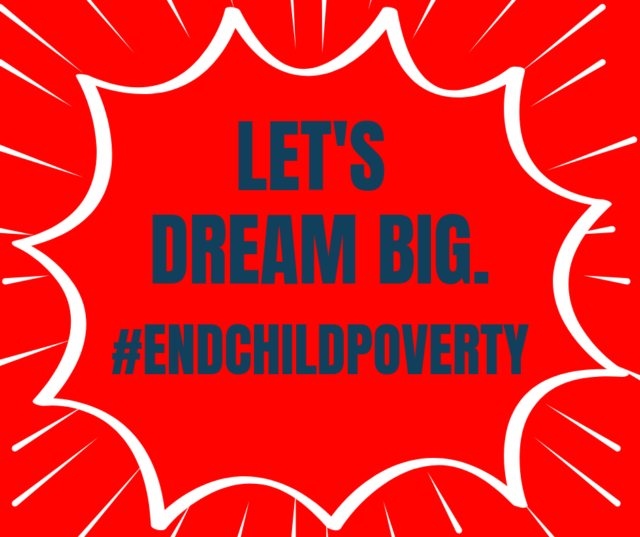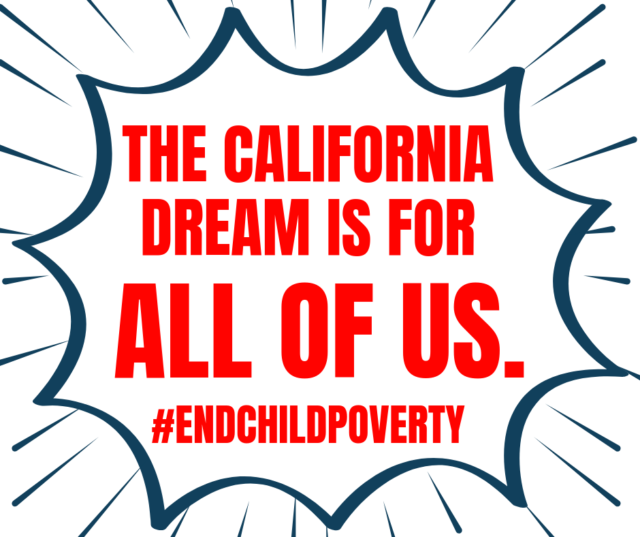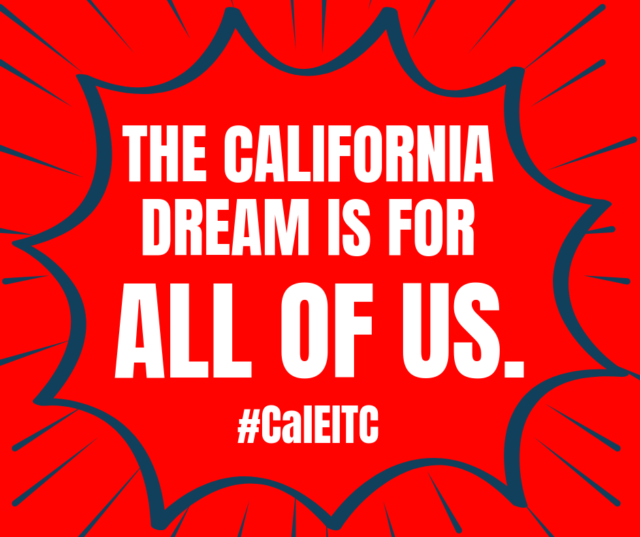We have to make sure our California leaders know that for 2 million kids, ending child poverty can’t wait.

We’re at a key juncture as Governor Gavin Newsom revises his proposed California budget and legislators fight for their bills. SIGN ON to tell our elected leaders that the End Child Poverty Plan should be a key priority in 2019.
- It’s comprehensive and achievable.
- It invests in families and communities.
- It will END extreme poverty in California for 450,000 kids.
Let’s do this! The End Child Poverty Plan letter has already been signed by over 60 esteemed California organizations. Seventeen pieces of legislation supporting the plan have already been introduced and the list is growing. We have to keep the momentum going so Governor Newsom and California State Legislators know this movement is only growing. Click to sign on:

Read the full letter below and click here for the press release. Help amplify the movement by sharing on social media:


Dear Governor Newsom and Budget Leaders of the California State Legislature:
We are writing as a broad coalition of Californians to ask that you urgently and immediately take actions to end deep childhood poverty and substantially reduce overall child and family poverty in California by implementing the End Child Poverty Plan.
One in five children in California live in poverty. We are the 5th largest economy in the world with the highest percentage and largest number of children living in poverty of any state in the nation. This is a human and a fiscal crisis that we have the ability to solve.
According to the Harvard Center on the Developing Child, the toxic stress of extreme poverty has a life-long negative impact on a child’s brain development. The same research indicates that the impact can be reversed by making the proven investments recommended by California’s Child Poverty Task Force that reduce or eliminate the need for more costly remediation in the future.
The Task Force’s End Child Poverty Plan is comprehensive, research-based, and community-informed. When fully implemented, the plan will end deep poverty for the 450,000 children in California living under 50% of the federal poverty line within four years and substantially reduce California’s highest-in-the-nation level of overall child and family poverty.
As children’s advocates, non-profits, religious leaders, business organizations, and concerned individuals we urge that the comprehensive End Child Poverty Plan be acted on immediately.
Reducing child and family poverty by 50% will also have a net positive impact on state and local government budgets of an estimated minimum of $12 billion annually in reduced remedial health, social service and educational expenditures and increased tax revenues.
The Governor’s proposed budget is an excellent starting point to begin reducing childhood poverty, especially for children living in deep poverty. The California Legislature can take the important step to eliminate deep poverty among families with children in the short term and to reduce overall childhood poverty by fifty percent by 2023 by adopting the Task Force’s science-based budget proposals. They include:
Primary Investments
- Increase grants in the California Work Opportunity and Responsibility to Kids (CalWORKs) program to bring families up above deep poverty as proposed in the Budget Act of 2018.
- Increase and expand access to the Earned Income Tax Credit.
- Adopt a Targeted Child Tax Credit (TCTC) that would put money back in the pocket of families and put it to work in the economy. This proposal also serves to provide a rental subsidy for families living in deep poverty or experiencing homelessness. Research conducted by the Stanford Center on Poverty and Inequality shows that cash or near cash subsidies have a long-term positive impact on reducing childhood poverty and increasing the overall economic health of a community. The TCTC alone, when fully implemented will eliminate deep child poverty within four years.
Foundational Investments
- Guarantee access to early care and education for children 0–8 years of age who are living in poverty in order to support child early development and families’ employment, education, health and upward mobility.
- Expand voluntary home visiting programs to support pregnant women and families with young children.
- Add 20 state-funded Promise Neighborhoods offering coordinated, community-driven support services.
- Secure Healthcare for All Californians.
- Fully fund transitional housing programs and supports for foster care youth up to the age of 21.
We urge these investments for the children of California today, to support the California Dream for each of our children.
Sincerely,
[YOUR NAME]
Also signed and supported by:
GRACE
Children Now
Children’s Defense Fund
County Welfare Directors Association of California
First 5 CA
First 5 Los Angeles
Fresno EOC Street Saints
Home Start, Inc.
Los Angeles Area Chamber of Commerce
St. John’s Well Child and Family Center
Western Center on Law and Poverty
Youth Policy Institute
The Actors Gang
Alameda County Community Food Bank
Alliance for Children’s Rights
American Academy of Pediatrics
Barrio Logan College Institute
California Alternative Payment Program Association (CAPPA)
California Association of Food Banks
California Catholic Conference
California Emerging Technology Fund
California Interfaith Coalition
CalEITC4ME
Catholic Charities of Santa Clara County
Child Care Law Center
Child Care Resource Center
Children’s Advocacy Institute
Children’s Institute
Children’s Network of Solano County
Clinica Romero
Council on American-Islamic Relations
Cradle to Career Fresno County
First 5 Alameda
First 5 Association of CA
Food Bank of Contra Costa and Solano County
Fresno Economic Opportunities Commission
Friends Committee on Legislation of California
Good Samaritan
Jamestown Community Center (The)
Jewish Center for Justice
John Burton Advocates for Youth
JPAC – Jewish Public Affairs Committee of California
Lutheran Office of Public Policy- CA
Marin Promise Neighborhoods
Maryvale
Mission Economic Development Agency (MEDA)
Mission Graduates
National Association of Social Workers
National Center for Youth Law
National Council for Jewish Women
National Foster Youth Institute
Parent Voices
Pathways LA
Policy Link
Rise Together Bay Area
SALEF (Salvadorian American Leadership and Educational Fund)
Shields for Families
South Bay Community Services
United Way Bay Area
United Way California
United Way of Greater Los Angeles
cc: Members of the California State Legislature
